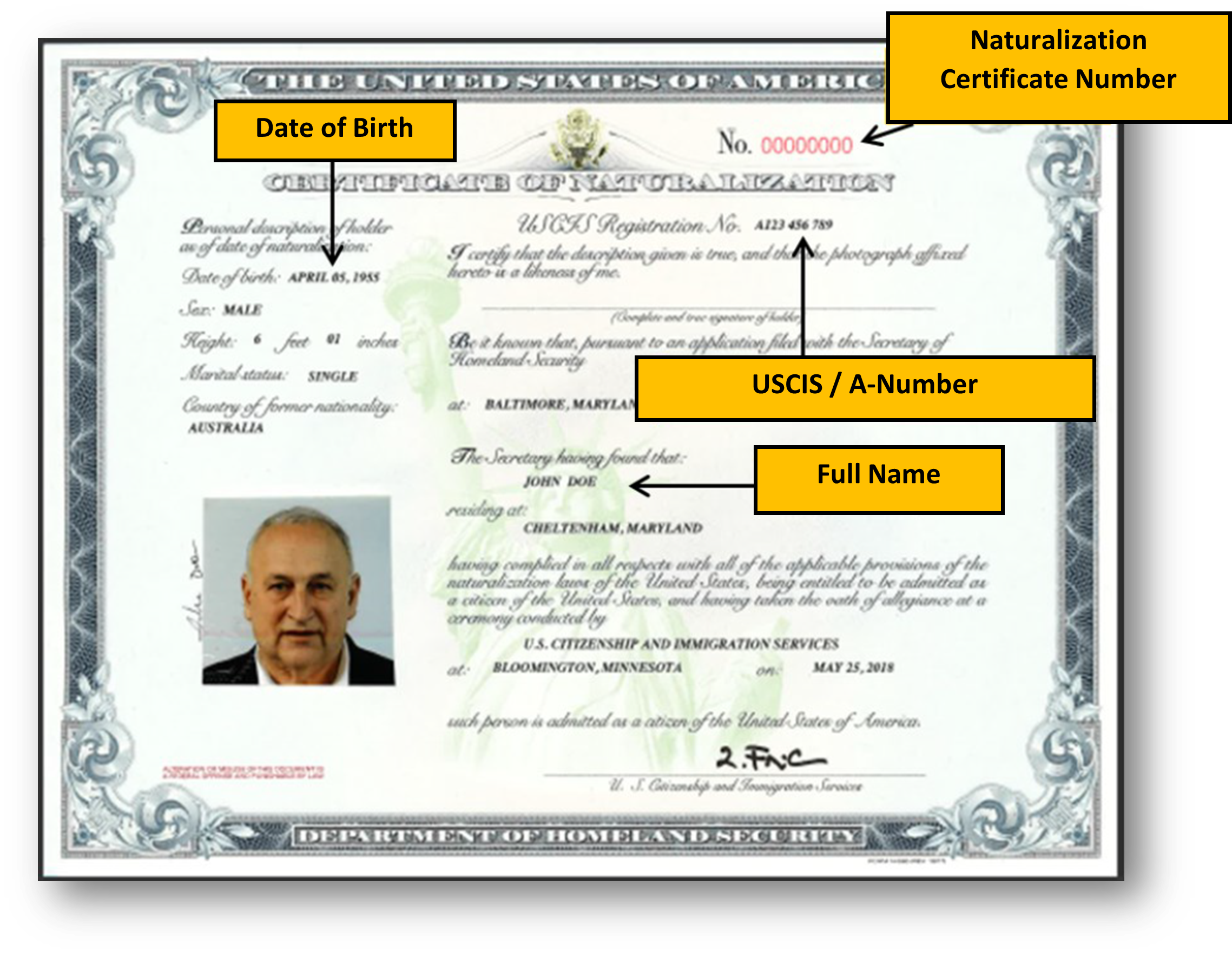
The following are exemplars of some commonly used immigration documents, but not of all documents that could be presented for a SAVE request. SAVE user agencies should contact SAVE if they have any questions about immigration documentation. If a user agency is not sure whether a particular immigration document is valid, they can submit a copy of the document with an additional verification request to SAVE.
Form N-550, Certificate of NaturalizationU.S. Citizenship and Immigration Services (USCIS) issues a Certificate of Naturalization to a person who was born outside the United States but became a citizen of the United States through naturalization.
USCIS and its predecessor, the U.S. Department of Justice Immigration and Naturalization Service, have issued several versions of this document type. Earlier versions may not contain all the data elements and security features that have been added over the years. Accordingly, the absence of these features in earlier versions does not mean the document is not valid.

N-550 (2010 Version)
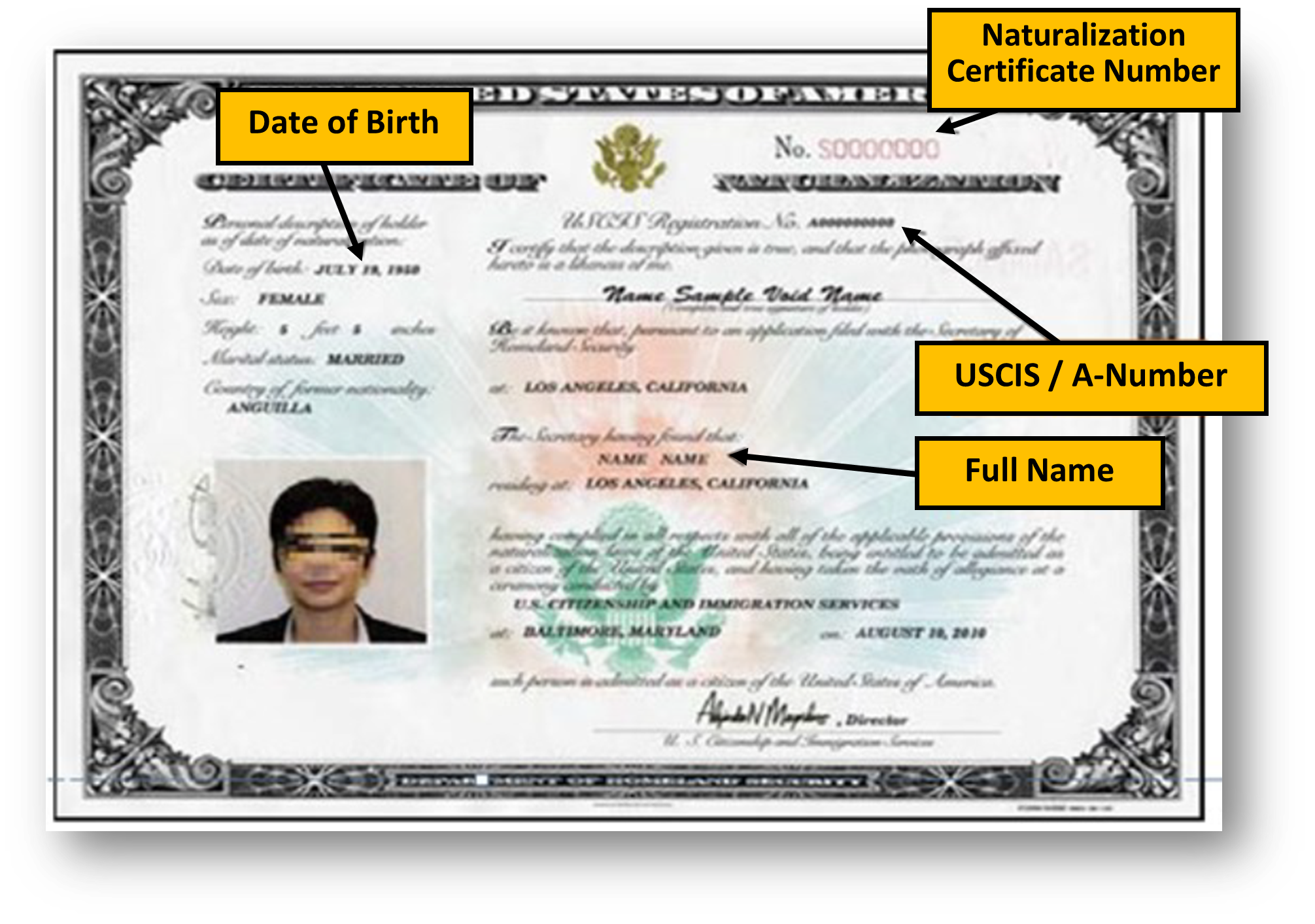
N-550 (Examples of Older Versions)
The appearance and data elements of Form N-550 may vary depending upon when it was issued.
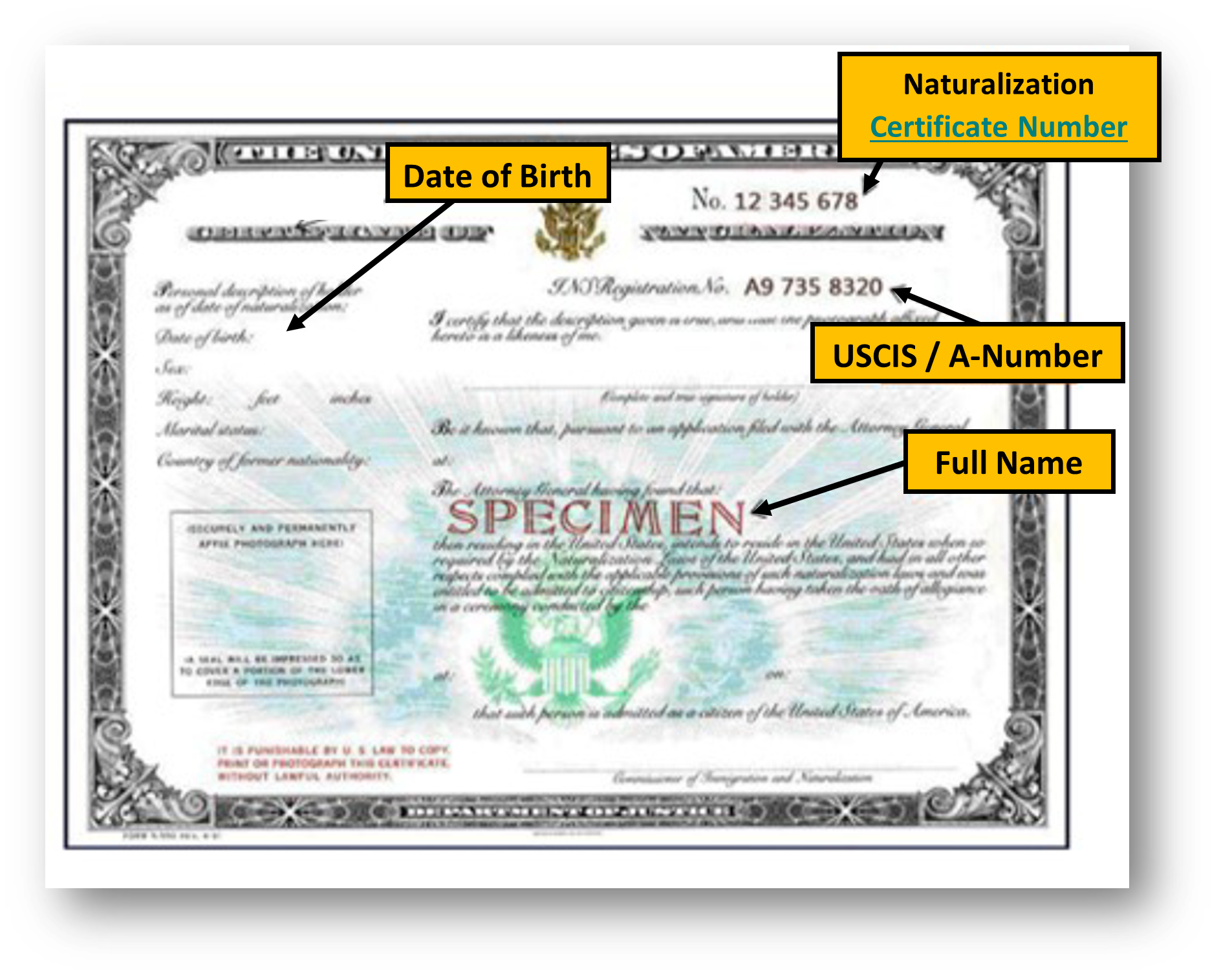

The Form N-570 is a replacement certificate issued by U.S. Citizenship and Immigration Services when the original Certificate of Naturalization is lost, mutilated, or destroyed, or when the individual’s name has legally changed.
USCIS and its predecessor, the U.S. Department of Justice Immigration and Naturalization Service, have issued several versions of this document type. Earlier versions may not contain all the data elements and security features that have been added over the years. Accordingly, the absence of these features in earlier versions does not mean the document is not valid.
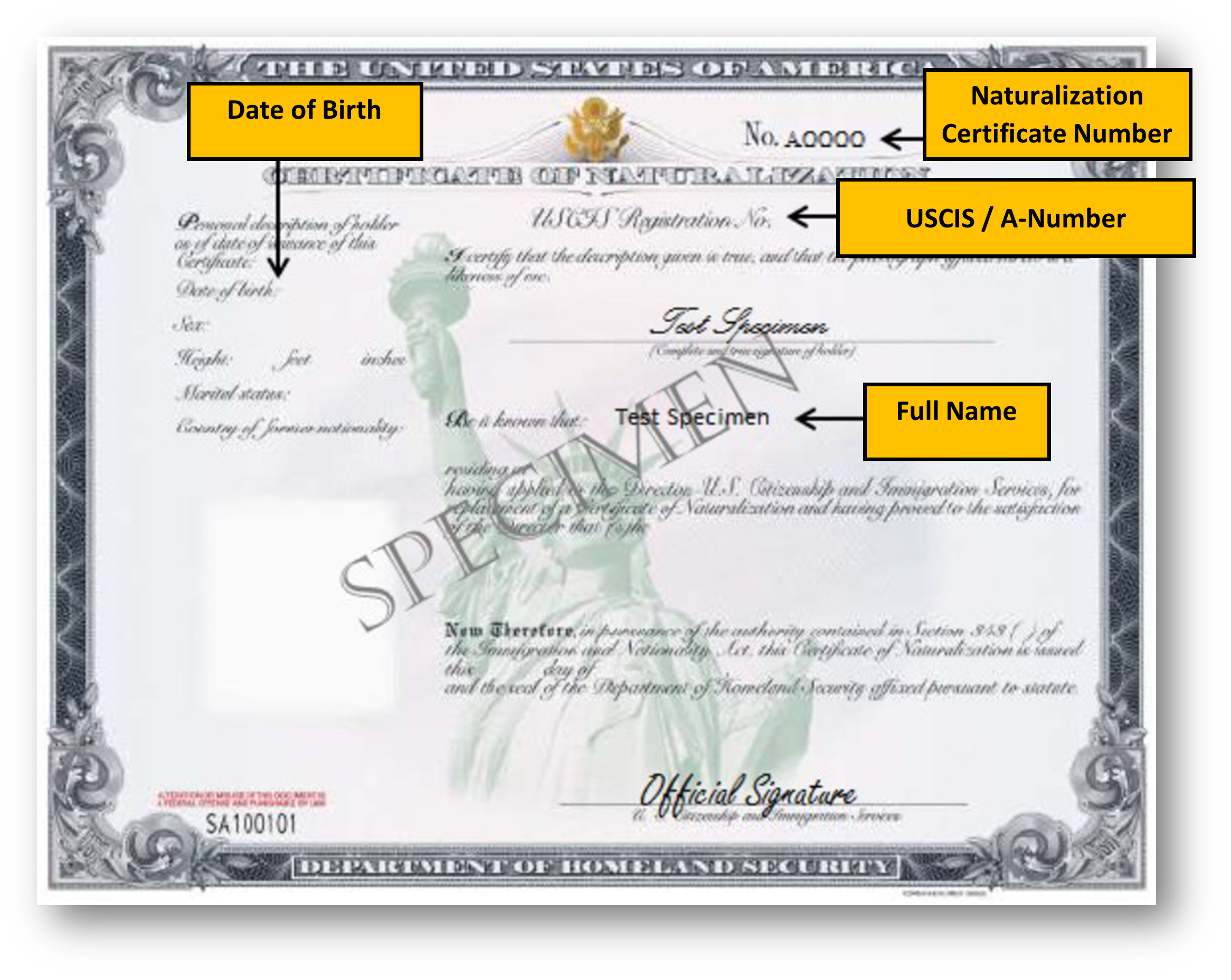
U.S. Citizenship and Immigration Services (USCIS) issues the Form N-560 to persons born outside the United States and who apply for a Certificate of Citizenship and:
Unlike a Certificate of Naturalization, the Certificate of Citizenship is not automatically issued to all those who qualify. To receive a Certificate of Citizenship, the individual or someone acting on behalf of the individual (for example, a United States citizen parent or legal guardian) must apply for it. It is common for individuals to have derived or acquired U.S. citizenship even though they do not have a Certificate of Citizenship.
USCIS and its predecessor, the U.S. Department of Justice Immigration and Naturalization Service, have issued several versions of this document type. Earlier versions may not contain all the data elements and security features that have been added over the years. Accordingly, the absence of these features in earlier versions does not mean the document is not valid.
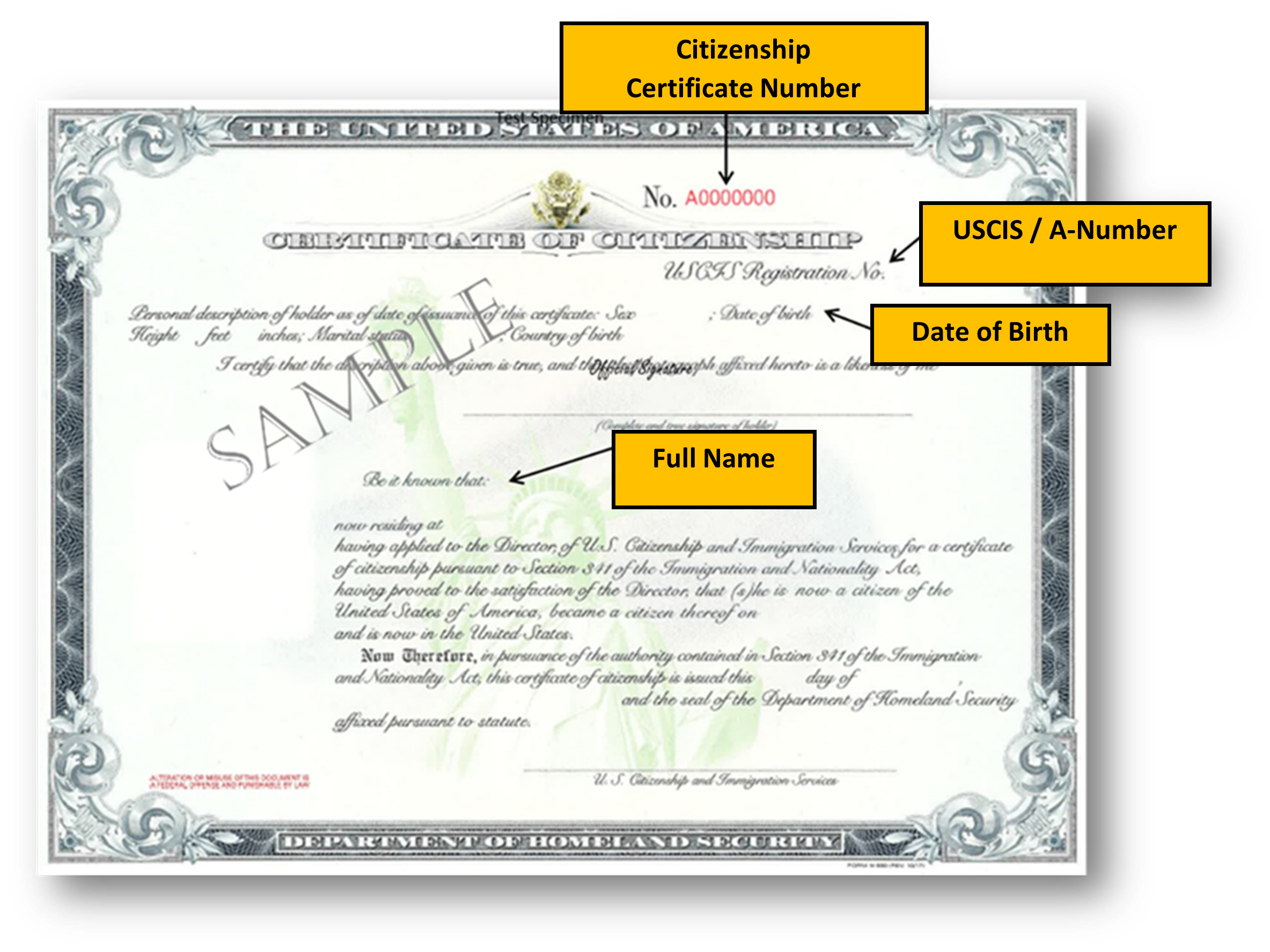
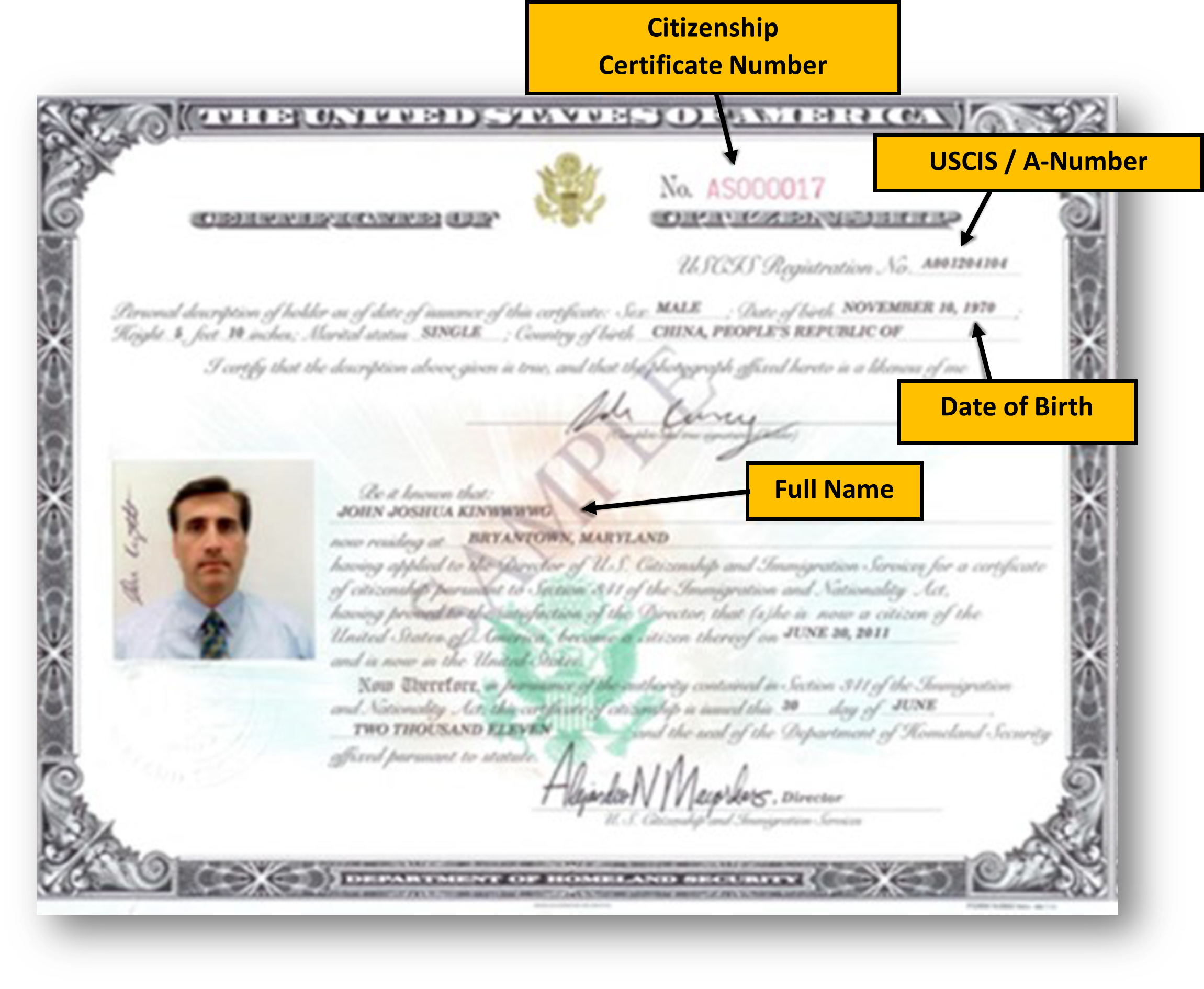
The appearance and data elements of Form N-560 may vary depending upon when it was issued.
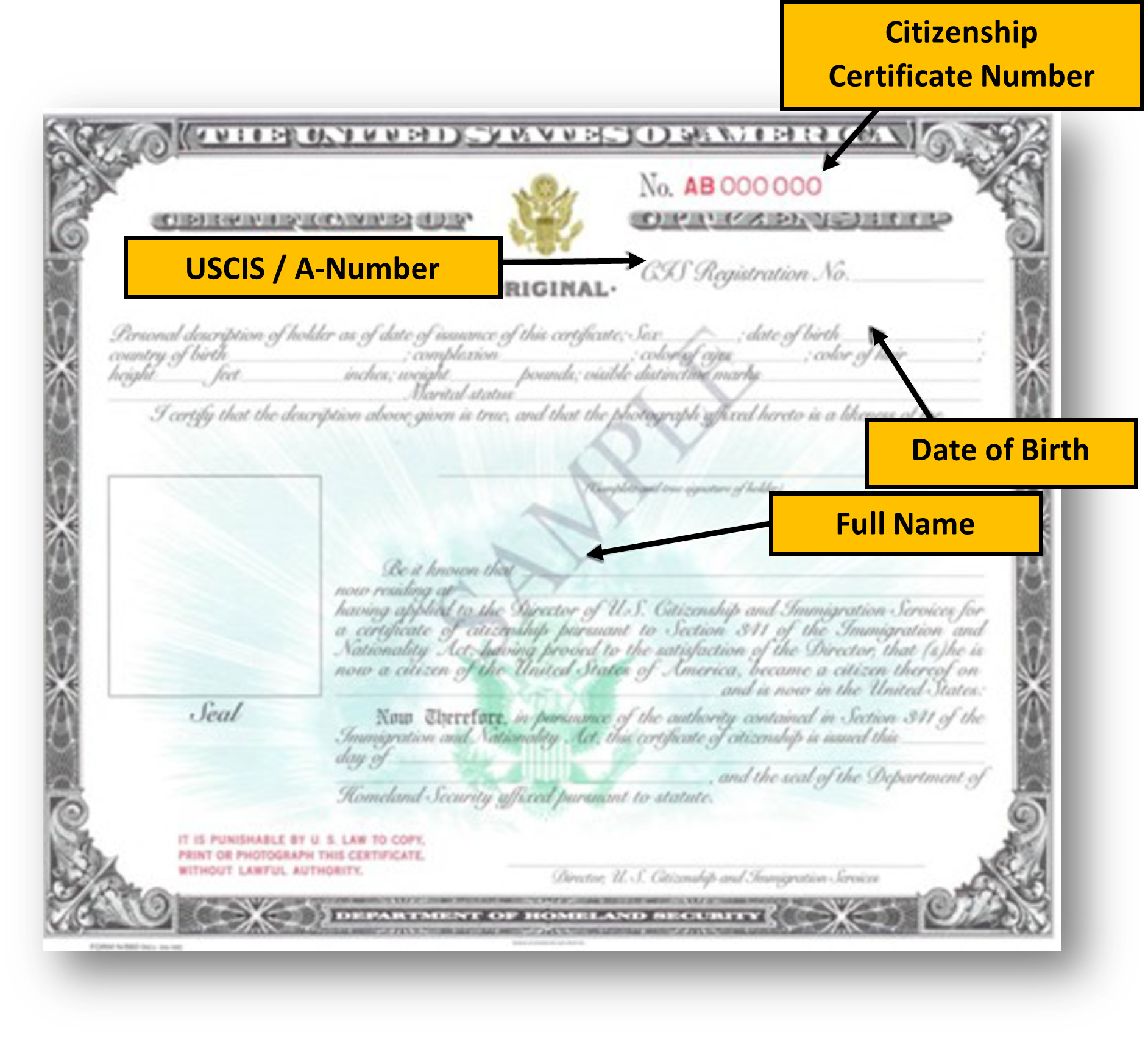
Form I-561 is a replacement Certificate of Citizenship issued by U.S. Citizenship and Immigration Services (USCIS) when the original is lost, mutilated, or destroyed or the individual’s name or date of birth has legally changed.
USCIS and its predecessor, the U.S. Department of Justice Immigration and Naturalization Service, have issued several versions of this document type. Earlier versions may not contain all the data elements and security features that have been added over the years. Accordingly, the absence of these features in earlier versions does not mean the document is not valid.
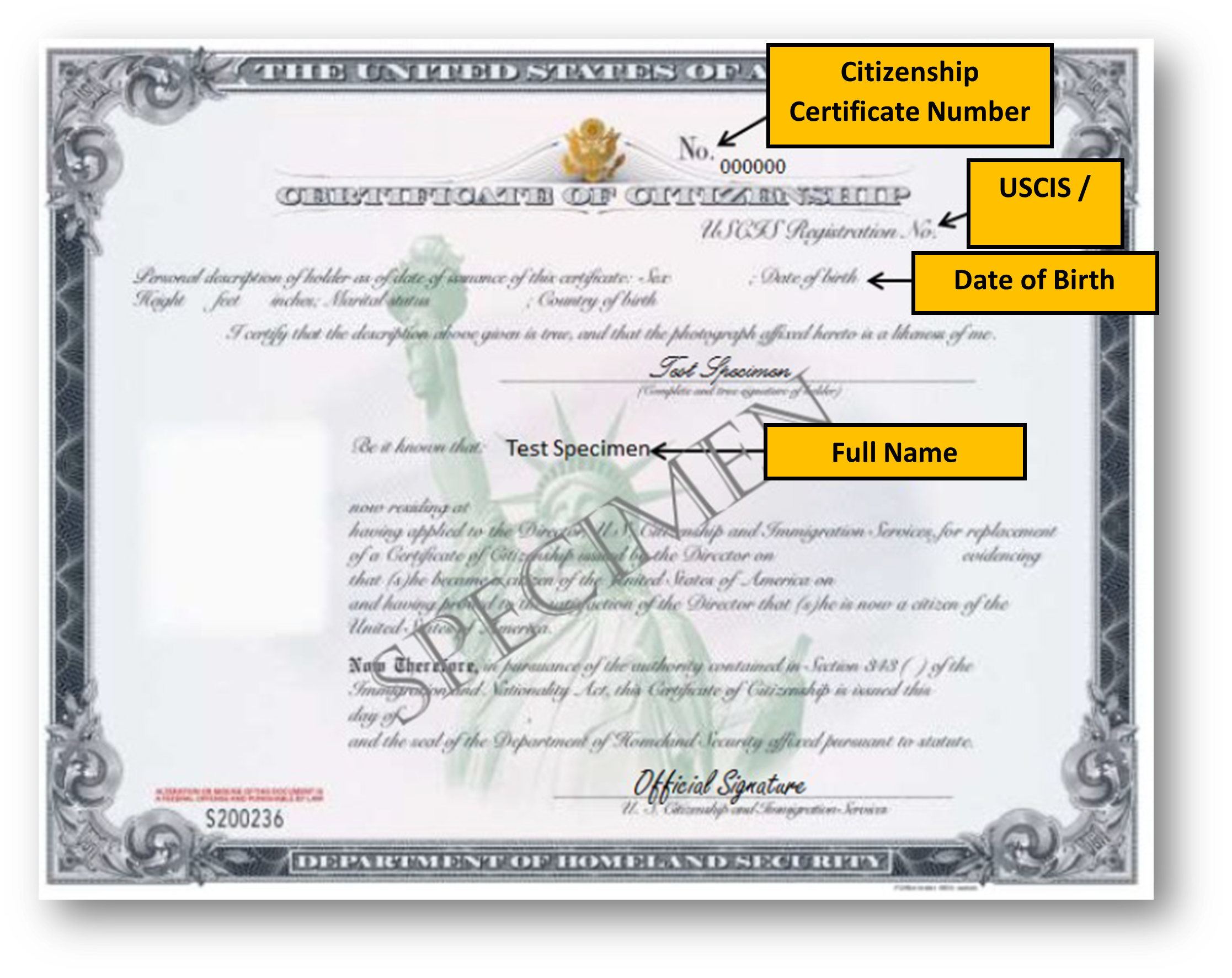
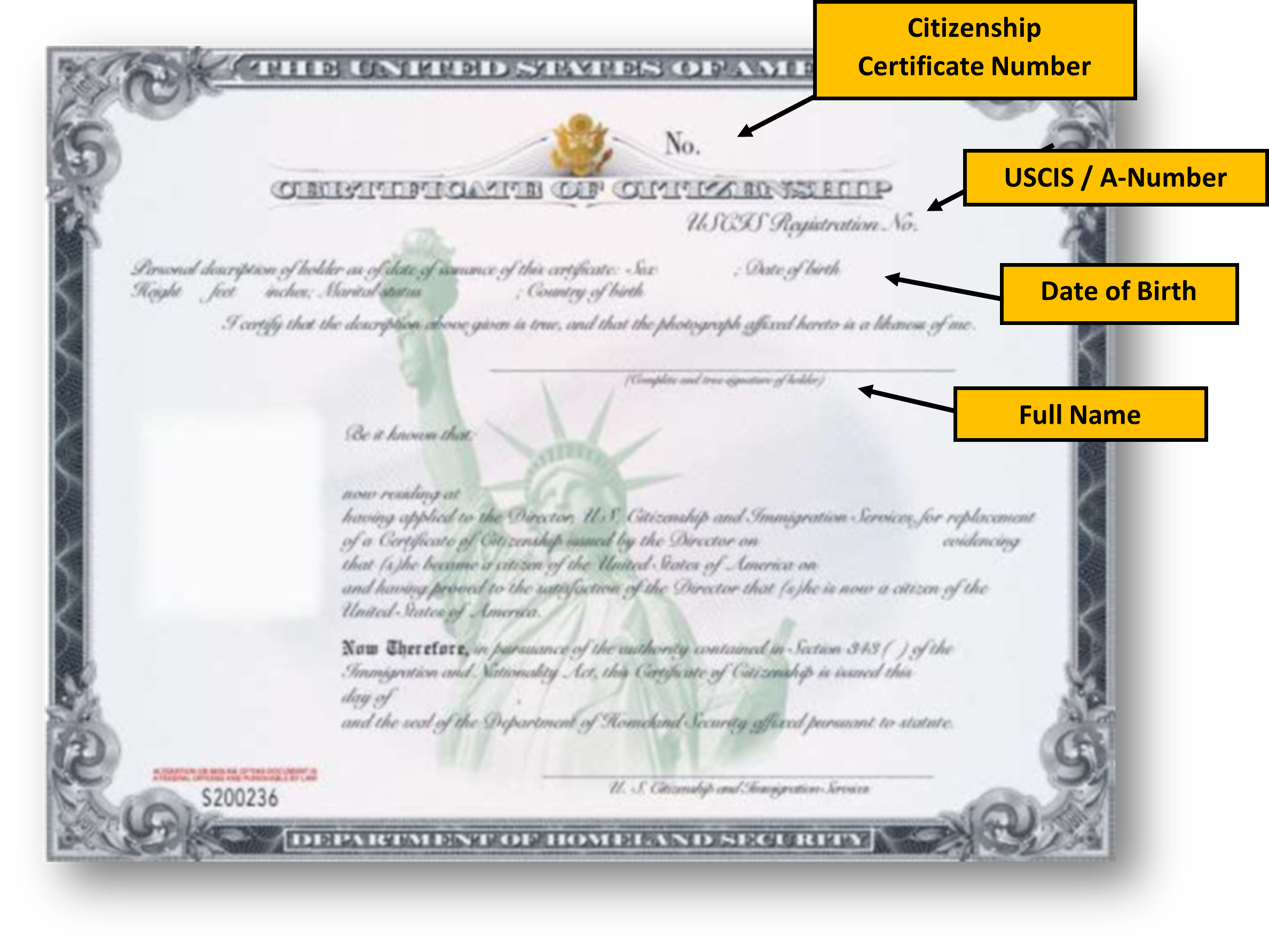
To reduce the risk of fraud and counterfeiting, USCIS redesigns the Permanent Resident Card (PRC) every three to five years. Introduction of new card designs does not mean that cards with previous designs are invalid. Both current and previous cards remain valid until the expiration date shown on the card (unless otherwise noted such as through an automatic extension of the validity period of the PRC as indicated on a Form I-797, Notice of Action, or in a Federal Register notice). USCIS began issuing its most recent redesign on January 30, 2023. Some PRCs issued after that date may still display the previous design format because USCIS uses existing card stock until supplies are depleted. These cards are also known as “Green Cards.”
LPRs may present an expired or expiring PRC in combination with a Form I-797C, Notice of Action, receipt notice for any of the following:
If the receipt notice contains language extending the validity period of the PRC, the PRC is valid through the end date on the PRC plus the extension period provided by the receipt notice.
Even if a PRC has expired, the bearer may still be a Lawful Permanent Resident. Verify their LPR status using SAVE.
Current Permanent Resident Card issued on January 30, 2023:
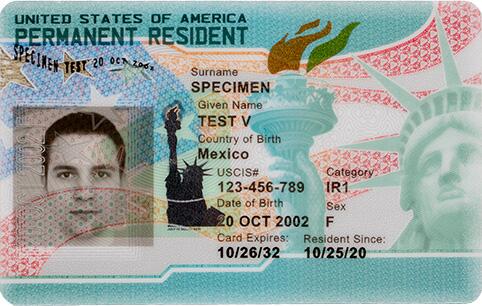
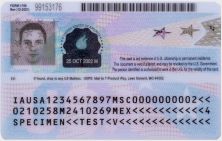
Previous Permanent Resident Card issued on May 1, 2017:
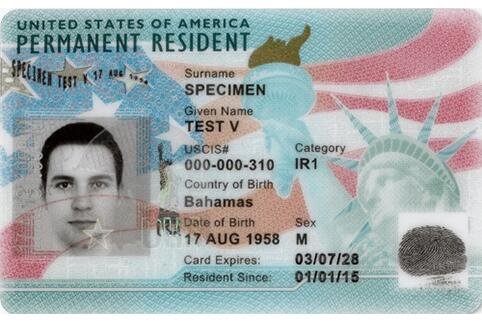
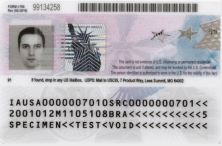
Additionally, Permanent Resident Cards issued through January 2021 may contain a USCIS-issued sticker extending its validity to the date indicated on the sticker.
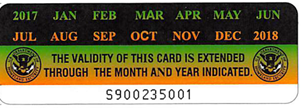
Previous Version of the Permanent Resident Card with signature:
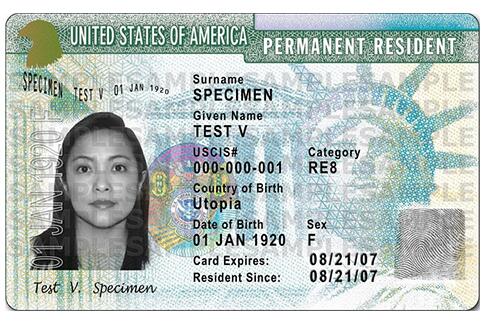
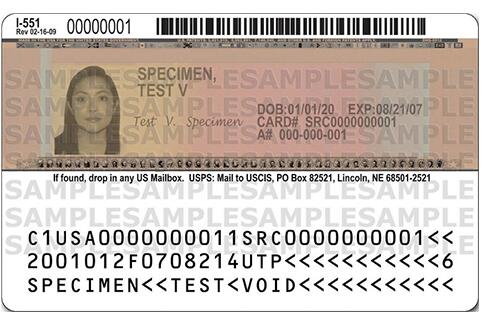
Previous Version of Permanent Resident Card with notation, "Signature Waived":
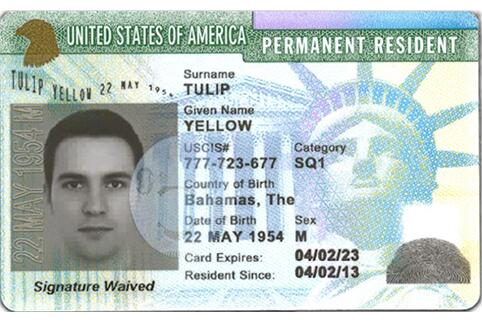
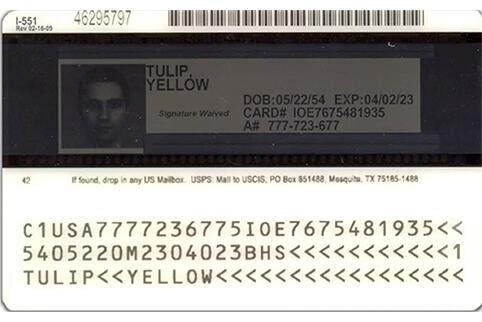
The U.S. Department of State (DOS) issues the MRIV to the bearer outside of the United States. The MRIV is affixed directly on a page of the individual’s foreign passport and usually contains the following text: “UPON ENDORSEMENT SERVES AS TEMPORARY I-551 EVIDENCING PERMANENT RESIDENCE FOR 1 YEAR.” When U.S. Customs and Border Protection (CBP) admits the bearer into the U.S., CBP applies an admission stamp to the passport. The admission stamp includes the date that CBP admitted the MRIV bearer into the U.S. and an endorsement by a CBP officer. A MRIV in a foreign passport, with an admission stamp endorsed by a CBP officer, is evidence that the person is a lawful permanent resident or conditional permanent resident.
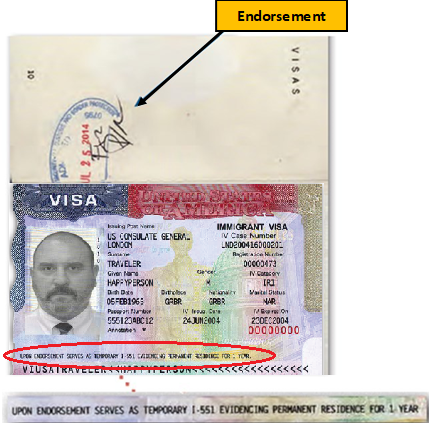
U.S. Citizenship and Immigration Services (USCIS) and U.S. Customs and Border Protection (CBP) issue the I-551 stamp, also sometimes referred to as an ADIT stamp, to lawful permanent residents or conditional permanent residents. This serves as evidence of status as an immigrant until the bearer receives a Permanent Resident Card. The ink may be red or blue depending on the issuing agency and when it was issued. The I-551 stamp is valid until the expiration date stated on the stamp.
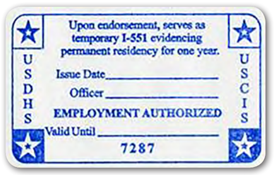
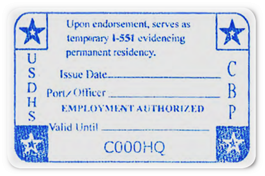
If no foreign passport is available, the I-551 stamp may be placed on a Form I-94, Arrival/Departure Record, and a photograph of the bearer may be affixed to the form.
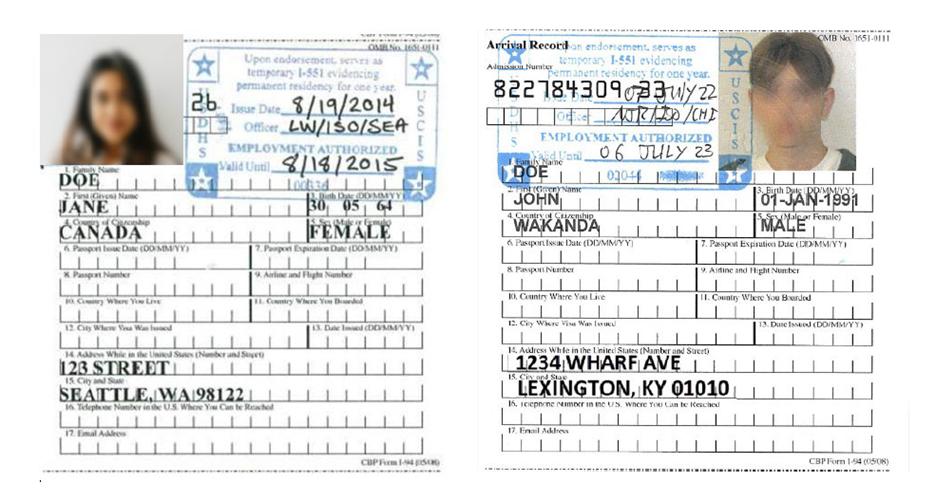
A Lawful Permanent Resident (LPR) may have a Form I-327, Permit to Re-Enter, also known as a reentry permit, if they intend to travel outside the United States for an extended time. A reentry permit establishes that the bearer has not abandoned their LPR status despite being absent from the United States for 1 year or more. Reentry permits are normally valid for 2 years from the date of issuance. A Reentry Permit appears similar to a Form I-571, Refugee Travel Document, but includes a Permit to Re-Enter notation above the photograph.
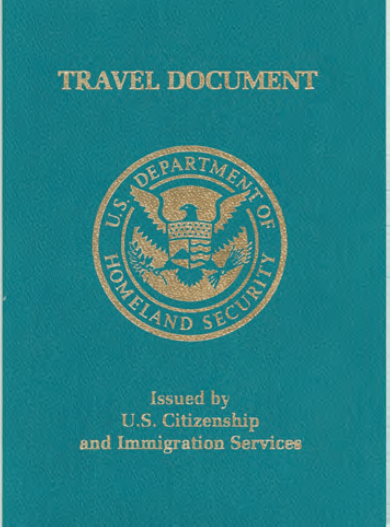
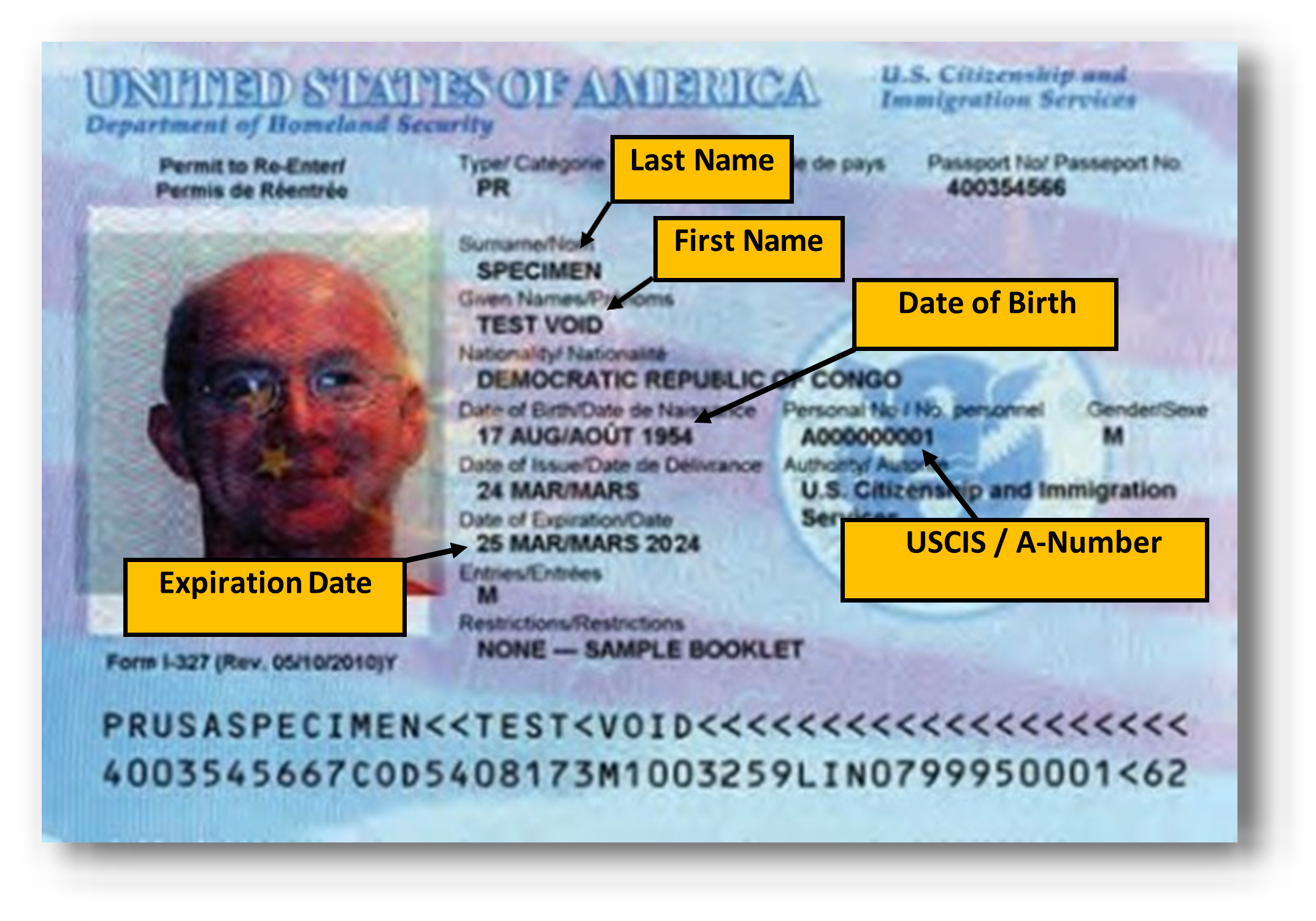
U.S. Citizenship & Immigration Services (USCIS)I issues refugee travel documents to people with refugee or asylum status and to lawful permanent residents who obtained their permanent resident status based on their refugee or asylee status. A Refugee Travel Document is valid for travel to or from the United States but may not be issued to otherwise eligible individuals who have been outside the United States for 1 year or more. Refugee Travel Documents are normally valid for 1 year from the date of issuance. A Refugee Travel Document appears similar to a Reentry Permit, but includes a Refugee Travel Document notation above the photograph.
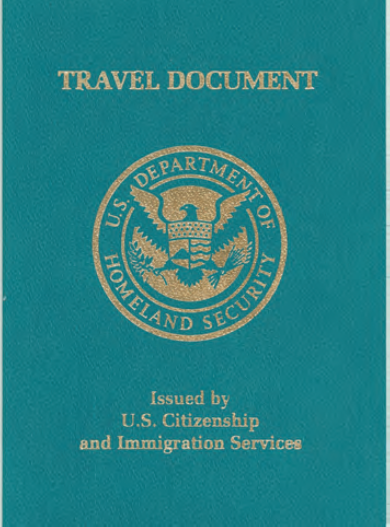
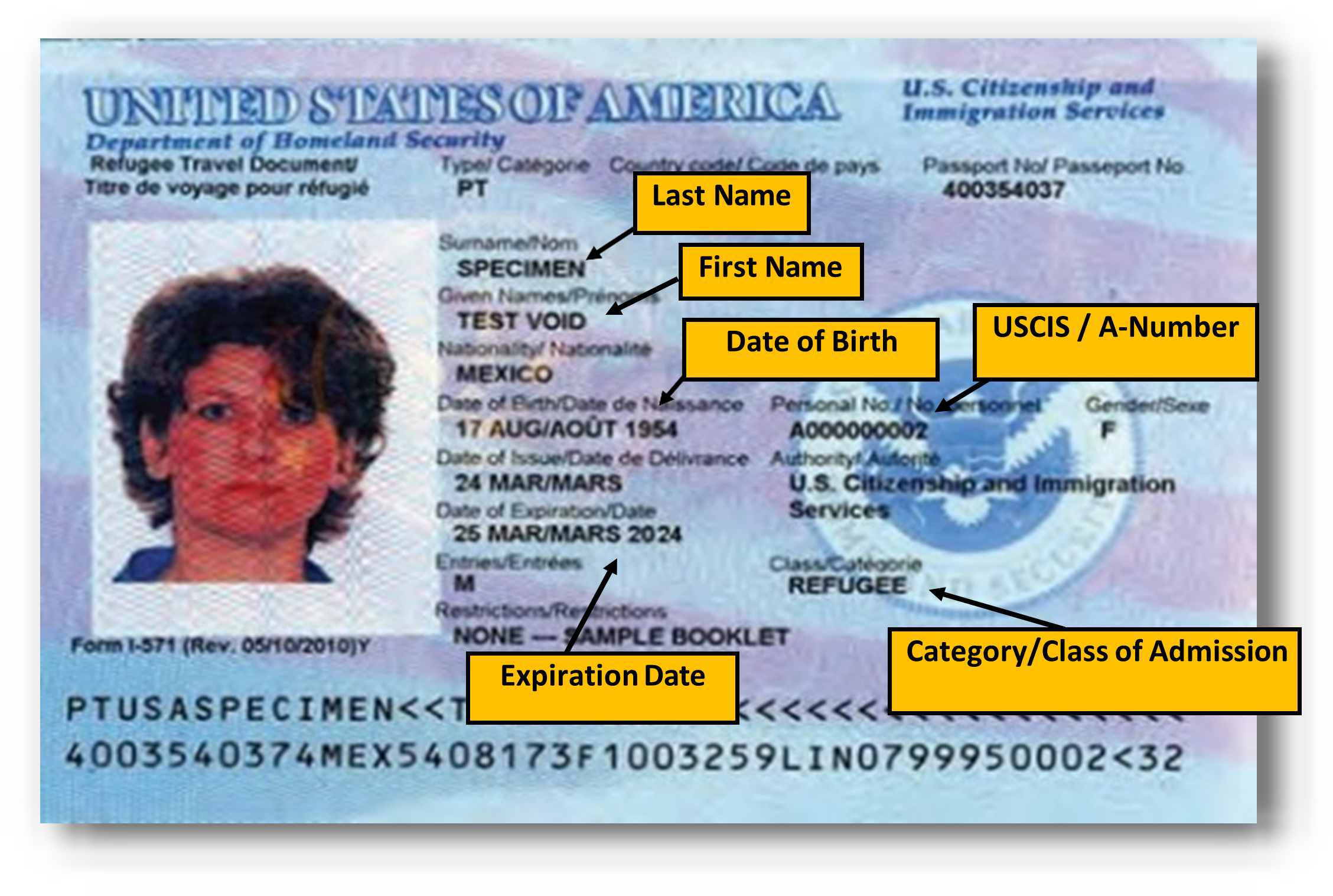
To reduce the risk of fraud and counterfeiting, USCIS redesigns the Employment Authorization Document (EAD) card every three to five years. Introduction of new EAD designs does not mean that previous designs are invalid. Both current and previous cards remain valid until the expiration date shown on the card (unless otherwise noted such as through an automatic extension of the validity period of the EAD indicated on a Form I-797, Notice of Action, or in a Federal Register notice). USCIS began issuing its most recent redesign on January 30, 2023. Some EADs issued after that date may still display the existing design format because USCIS uses existing card stock until supplies are depleted.
User agencies should accept DHS-issued EADs that have had the validity period automatically extended by DHS because they are unexpired. These include EADs that bear a “Card Expires” date that has passed, or one that has not yet passed. To determine whether an EAD validity period is extended, agencies should follow the scenario-based guidance below and then use SAVE to verify the extended EAD validity period.
1. Applicant presents EAD with a Temporary Protected Status (TPS) Category (A12 or C19) or Deferred Enforced Departure (DED) Category (A11) but no extension notice.
2. Applicant presents an EAD and a Notice of Action (Form I-797 or Form I-797C) that includes the same category as the EAD and language extending of the validity period of the EAD.
Verify all EAD auto-extensions using SAVE.
Current Employment Authorization Document:
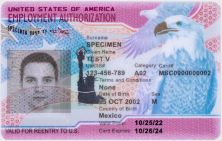

Previous Employment Authorization Document:
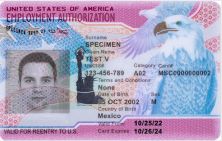

U.S. Citizenship and Immigration Services (USCIS), U.S. Customs and Border Protection (CBP), and U.S. Immigration and Customs Enforcement (ICE) issue Form I-94, in either paper or electronic format, to noncitizens as evidence of their immigration status or category. The Form I-94 generally includes an expiration date, a notation of "D/S” for duration of status (e.g., for F-1 nonimmigrant students), or “indefinite” for individuals allowed to remain in the United States indefinitely (e.g., asylees). Form I-94 also includes the person’s Class of Admission (COA). Form I-94 numbers are 11 digits or, for CBP I-94s issued on or after May 2019, generally 9 digits followed by a letter in the 10th position, and a digit in the 11th position.
CBP has automated the Form I-94 at air and sea ports of entry. Some Form I-94s at land ports of entry have also been automated. CBP may also provide a CBP admission or parole stamp on the person’s foreign passport or other travel document. Noncitizens can obtain a copy of their automated Form I-94 from https://I94.cbp.dhs.gov or the CBP One mobile app. The Form I-94 printout from the CBP I-94 website is an official Form I-94 and should be accepted as such.
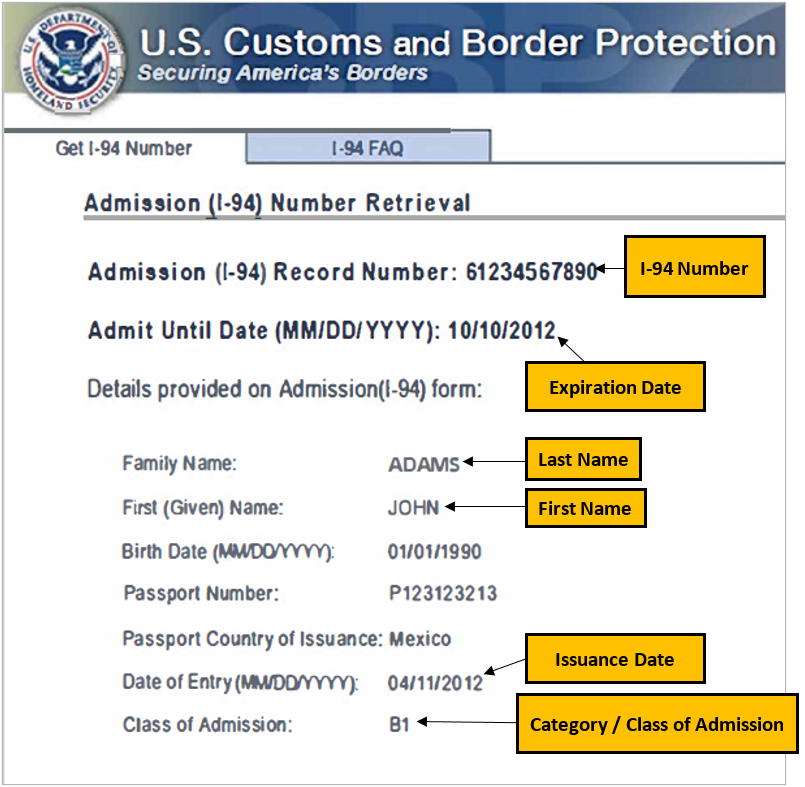
USCIS and ICE issue a paper Form I-94, Arrival/Departure Record. CBP also often issues a paper Form I-94 at land ports of entry and, in limited circumstances, at air and sea ports of entry. Information on a paper Form I-94 may be hand-written rather than printed. A Form I-94 issued by CBP may also include an admission stamp endorsed by a CBP officer.
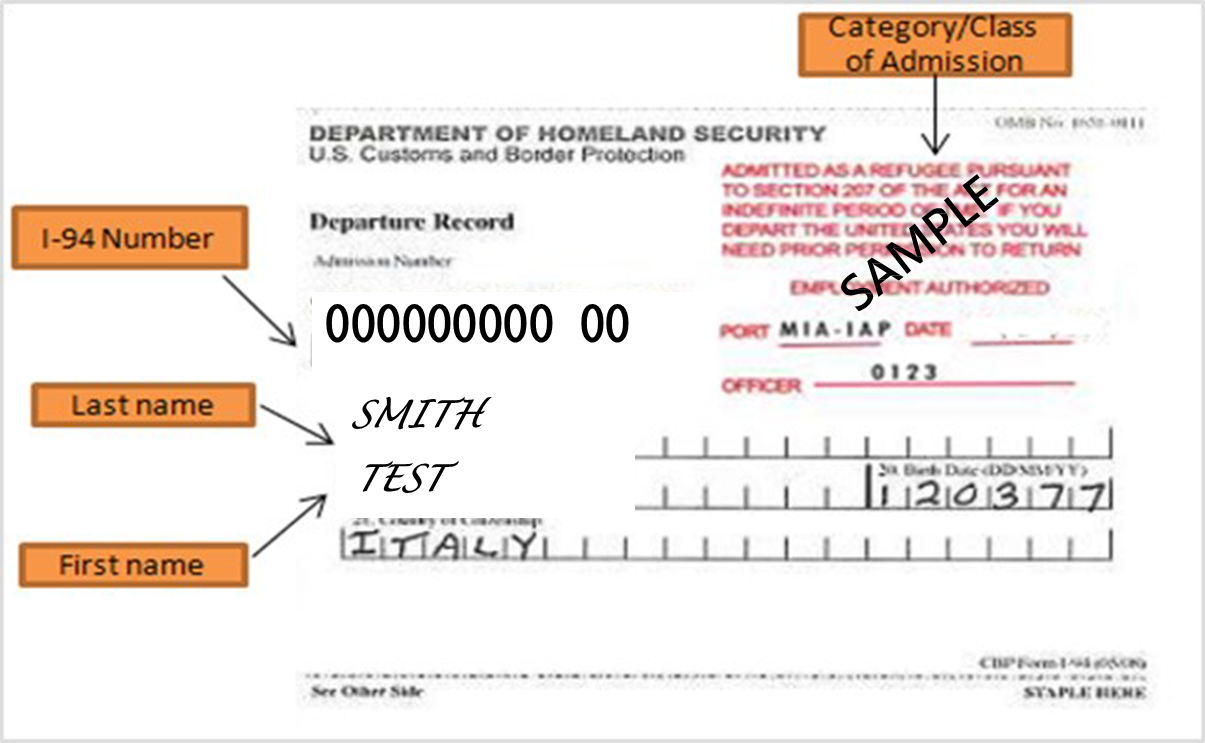
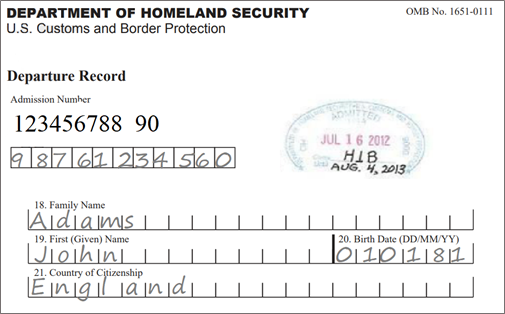
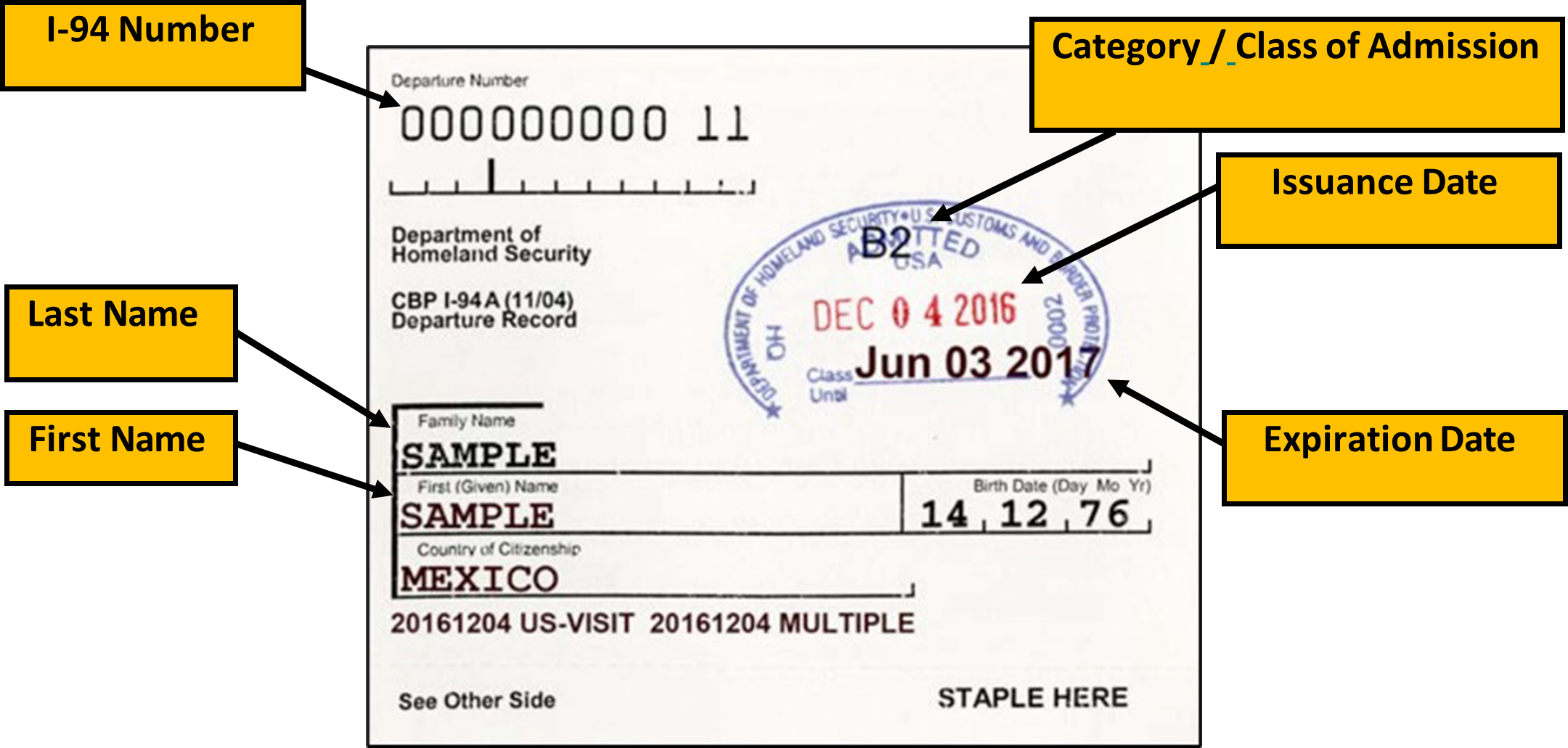
Global Entry is a U.S. Customs and Border Protection (CBP) program that allows expedited clearance for pre-approved, low-risk travelers upon arrival in the United States. Global Entry members enter the United States through automatic kiosks at select airports.
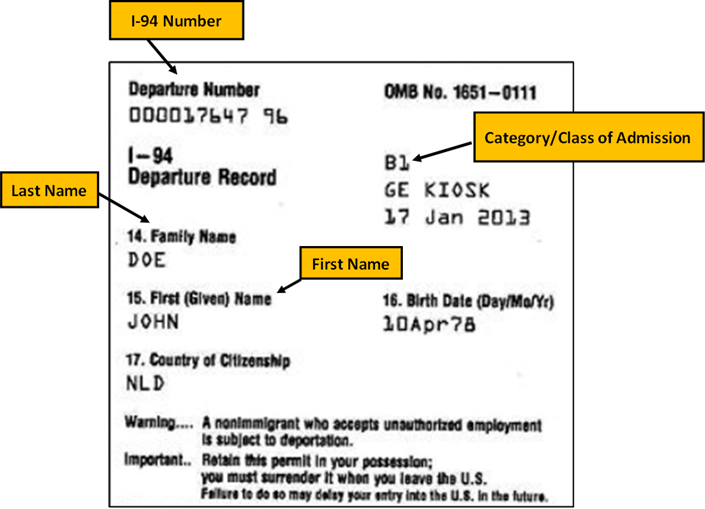
USCIS issues a paper Form I-94 as a tear-off document from Form I-797A, Notice of Action, to reflect a noncitizen’s immigration status following an approved application or petition for immigration benefits or an extension of stay.
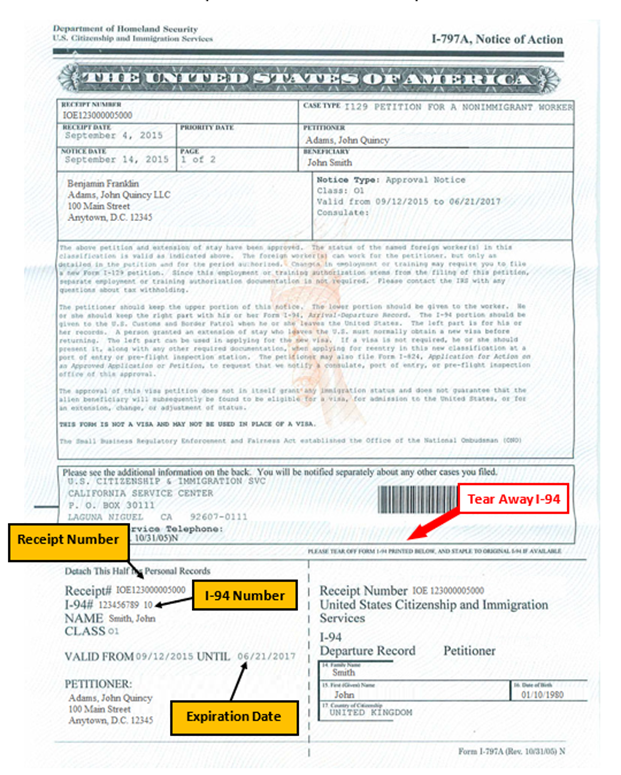
A foreign passport is a travel and identity document issued by a foreign government. It provides proof of a person’s identity and foreign citizenship or nationality and is often required for inter-country travel. E-passports have the same format as other foreign passports, and also contain an electronic chip. A foreign passport does not, by itself, establish that the bearer has an immigration status or category. However, a foreign passport with an admission stamp endorsed by a CBP officer is evidence of the immigration status or category reflected on the stamp. In addition, documentation of an immigration status or category, such as a Machine Readable Immigrant Visa, I-551 stamp, or paper Form I-94, is often affixed or attached to a foreign passport.
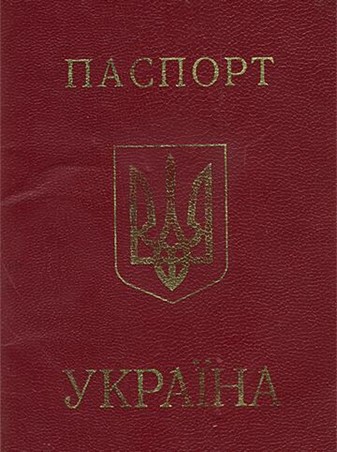

U.S. Citizenship and Immigration Services issues several types of Forms I-797 to communicate with applicants, petitioners, and beneficiaries, or to convey an immigration benefit.
The following list provides a brief description of each:
For more information, see the Form I-797: Types and Functions webpage.
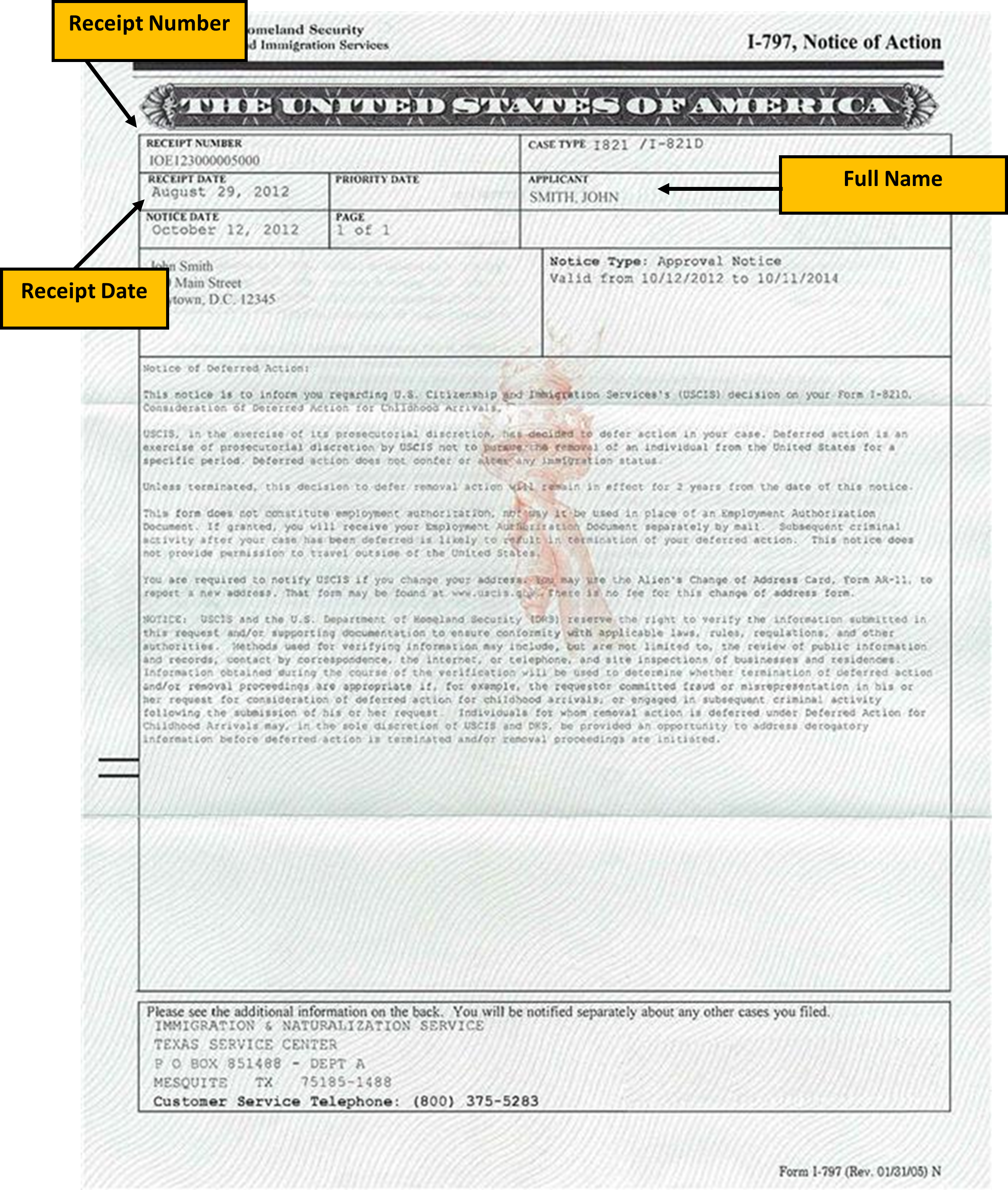
Form I-20, Certificate of Eligibility for Nonimmigrant Student Status – For Academic and Language Students OR Form I-20, Certificate of Eligibility for Nonimmigrant Student Status – For Vocational Students
The Student and Exchange Visitor Program (SEVP) is part of the National Security Investigations Division of U.S. Immigration and Customs Enforcement (ICE). On behalf of the Department of Homeland Security (DHS), SEVP manages approved schools, nonimmigrant students in the F and M visa classifications, and their dependents. Once accepted into a SEVP-certified school F or M students, and their spouses and minor children, receive the initial Form I-20from the school’s designated school official. The SEVP-certified school in which the F or M student is enrolled issues the subsequent Form I-20 to demonstrate that the student and accompanying family member(s) are in a current nonimmigrant status. If an F or M nonimmigrant submits a Form I-94 and/or a foreign passport for verification, SAVE will prompt the user to enter the Form I-20 information.
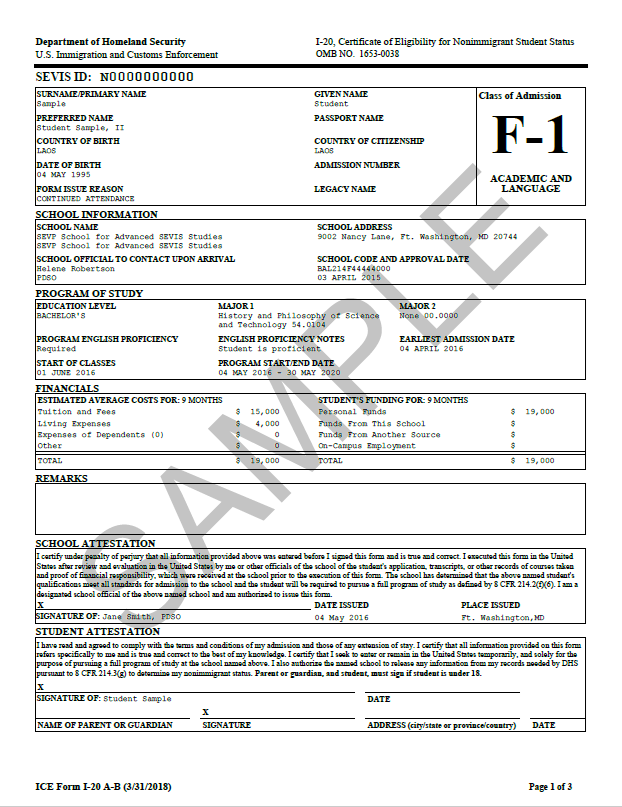
The U.S. Department of State (DOS) designated sponsor issues the Form DS-2019 to J exchange visitors, and their spouses and minor children. A subsequent DS-2019 may be issued by the DOS designated sponsor. For example, if a J student starts a new program, transfers to another program, or gets an extension of the existing program, the designated sponsor will issue a new Form DS-2019 reflecting the transfer and any subsequent extensions.
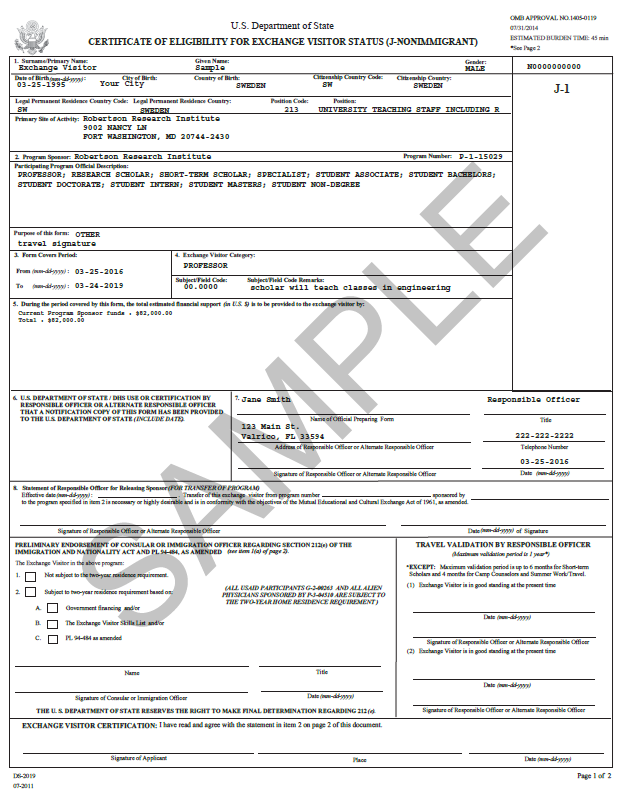
U.S. Customs and Border Protection (CBP) and U.S. Immigration and Customs Enforcement (ICE) issue a Form I-220A, Order of Release on Recognizance (PDF), to noncitizens who have been placed in removal proceedings and then released on their own recognizance. This form is not evidence of having an immigration status or category.

U.S. Customs and Border Protection (CBP) and U.S. Immigration and Customs Enforcement (ICE) issue a Form I-220B, Order of Supervision (PDF), to noncitizens who have a final order of removal but have not been removed from the United States. This form is not evidence of having an immigration status or category, but individuals with an Order of Supervision are eligible to file a Form I-765, Application for Employment Authorization and may have a Form I-766, Employment Authorization Document.
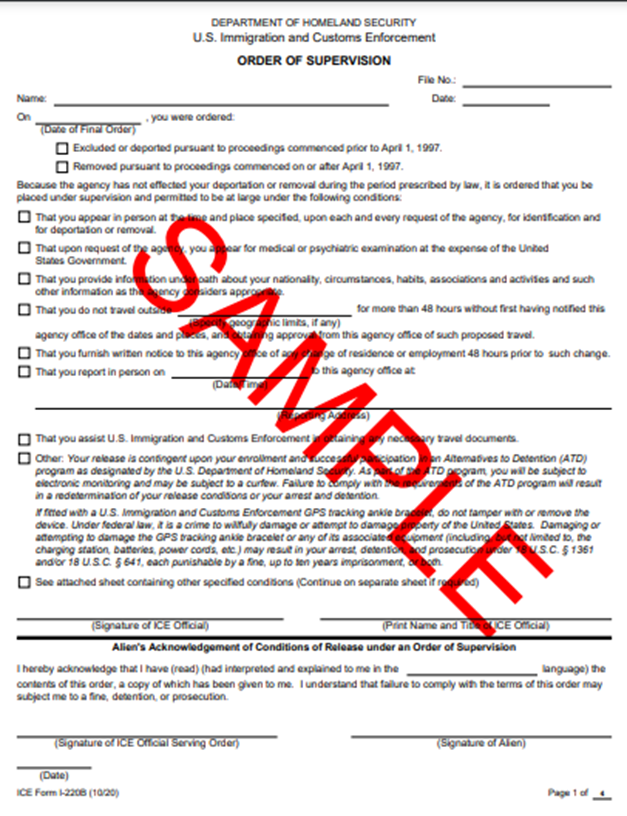
A Form I-862, Notice to Appear (NTA) (PDF), is a charging document that instructs a noncitizen to appear before an immigration judge. This is the first step of removal proceedings. An NTA is not an identity document, nor is it evidence of having an immigration status or category.

Noncitizens apprehended and then released by U.S. Customs and Border Protection (CBP) or U.S. Immigration and Customs Enforcement (ICE) sometimes have a copy of Form I-385, Alien Booking Record. This is a record related to apprehension and not an identity document. It is also not evidence of having an immigration status or category unless it includes a parole stamp endorsed by a CBP or ICE officer or a parole notation.
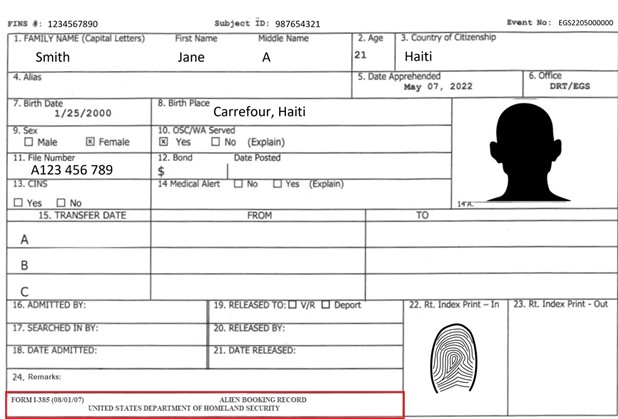
Eligible individuals in immigration proceedings before the U.S. Department of Justice, Executive Office for Immigration Review (EOIR), can apply for various forms of relief from removal, including but not limited to adjustment to permanent resident status, asylum, and cancellation of removal. An immigration judge (IJ), the Board of Immigration Appeals (BIA), or a federal court may grant relief.
An IJ may issue an oral decision and provide the parties with a brief written memorandum summarizing the order issued in the oral decision. Alternatively, an IJ may issue a written decision with an order included at the end of the decision. Immigration Court orders and summaries of orders may include format and content variations and are subject to change.
The BIA issues published decisions that are records in the public domain. Unpublished EOIR decisions are part of a Privacy Act protected mixed system of records.
DHS uses various letters to communicate decisions to regarding some immigration benefits or administrative relief.